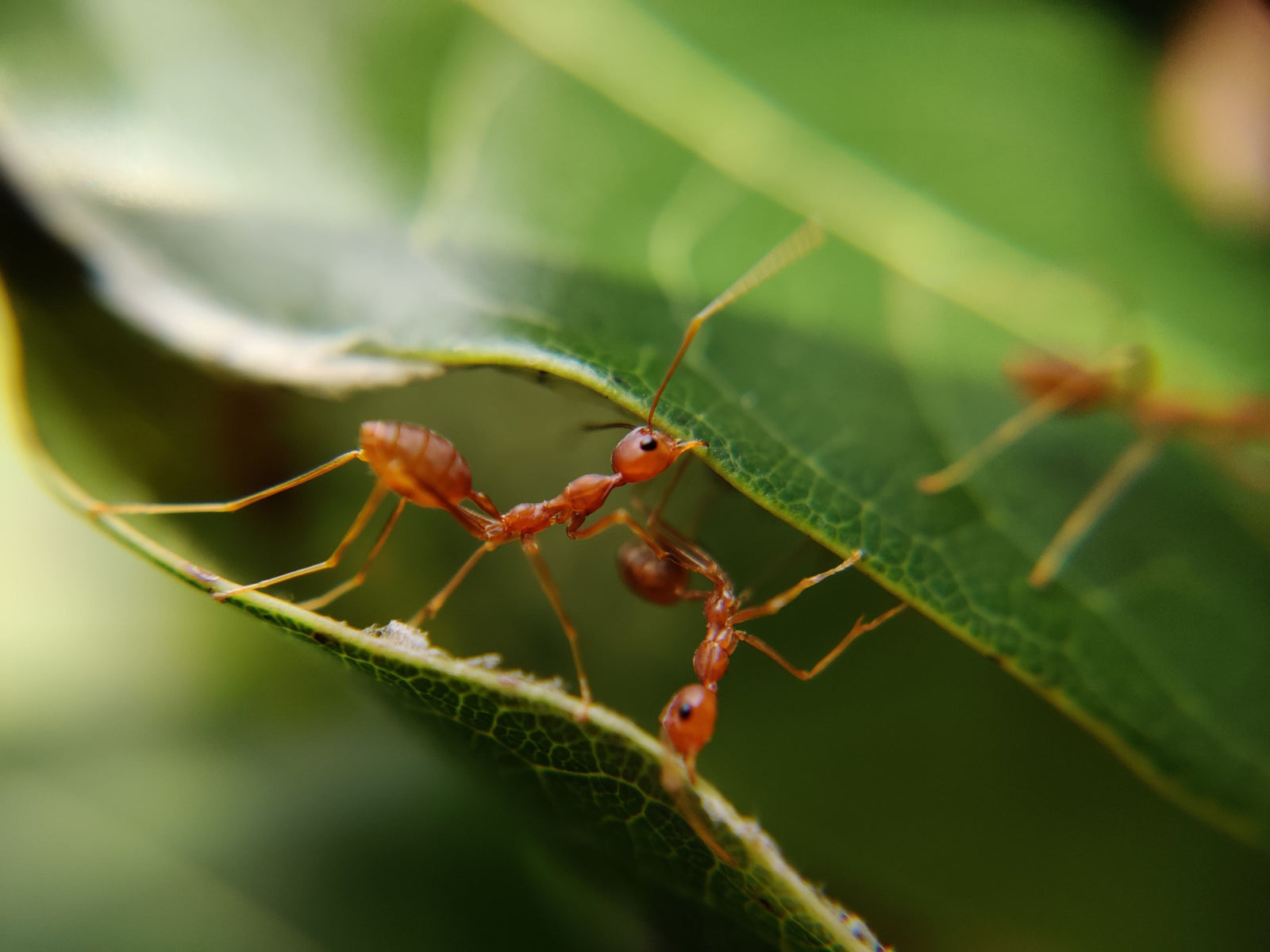FREE SHIPPING AND NO MINIMUM SPEND FOR ALL ORDERS!
FREE SHIPPING AND NO MINIMUM SPEND FOR ALL ORDERS!
Accessories
Check out our full lineup of yoga accessories to help you with your daily meditation practice and fitness goals...
Try our new Cork Yoga Brick for soft but solid support
Check out our full lineup of yoga accessories to help you with your daily meditation practice and fitness goals...

How To Set Up An Ant Farm
4 min read
This article helps you set up a new ant farm (formicarium) and is for hobbyists who already have made or purchased an ant house.
"I think everybody should study ants. They have an amazing four-part philosophy; never give up, look ahead, stay positive and do all you can." Jim Rohn
Welcome my fellow myrmecologists (those who study ant colonies and how ants behave)! You are about to enter the amazing working and social world of the ant.
You will need
- Your ant farm house
- A hand shovel, spoon, a jar and a freezer bag
- Cotton wool for the ant’s water
- A small piece of flat plastic for the ant’s food
Preparing Your Ant Farm
To clean your ant house, always use fresh water and clean cloths with no embedded solvents, detergents or antiseptics. All of these can affect your ants and you want the safest environment for them. Do clean your ant farm because once established you will not have access the tank surfaces very often. Pay attention to the “windows” into your tank as you want the best visibility possible to the ant activity.
To have your ants at their most active you need to create a habitat that mimics their environment as closely as possible. If not you may find your ants retreating to the inner workings of the ant farm. Ants naturally dig tunnels for their homes so to mimic this find a nice shady place for your tank out of direct sunlight. It is also a good idea to cover the ant farm from the light when you are not using it, just don’t cover the breathing space.
Once the ants have built their tunnels in your ant farm they can be easily destroyed so choose a spot where they wont be moved. Be sure to announce to everyone in a loud voice, “the ants live here now!” so no one in is tempted to move them into a different space!

Ant Hunting Time
Well ant dirt hunting time first of all. Look in your backyard or neighbouring areas for the tell tale signs of ant activity. If you see little mounds of dirt, inspect closer and you should see the ants. Look under rocks or large logs (be careful of creatures that bite).
Once you have found your ants collect a jar full of neighbouring soil. As ants mark their soil with pheromones they will adapt faster to soil from around their nest. Sift the soil using a sieve before placing it into the ant farm so it is as clean and refined as possible. The best ant soil has a mix of 2 parts soil to 1 part sand and is slightly moist providing the ants with the raw building materials for a strong tunnel network.

Into The Tank
Place the soil into the tanks “spare space.” Leave room for you to feed and water the ants easily. In a well-designed and ventilated ant farm the ants will not need much space at all.
It's Ant Time!
Spoon and bag some ants quickly into the bag (with holes for breathing). We find a bag is best for collecting ants and transferring them to the house as you can turn the bag inside out to help them escape. 20-25 ants is a good number for an average sized ant farm. Please be careful, ants can bite, consider wearing gloves. A quick game is a good game here. Get the bag sealed up fast! Once collected transfer the ants into the ant farm by upending the bag and sealing the lid.
Feeding Time At the Zoo
Everything you have seen in cartoons is correct, ants love sugar! In order to keep your ants healthy, feed them every few days with a few drops of honey, jam, or pieces of fruit on the small piece of flat plastic. If you would like to feed your ants insects which they also love; catch and put the insect into the freezer for a few hours which will kill it and then chop it into small pieces that you can feed the ants.
Don't overfeed or you will have mould in your ant farm and have to start again. Avoid meats or cooked food which can attract pests to your ant farm.

Ants get most of the moisture they need from food, but if it looks like the dirt is getting dry, wet a cotton ball with water and place it at the top of the ant farm for a few days. Don’t pour water directly into the ant farm, it will get too wet, and the ants could drown.
This ant farm is set up without a Queen ant to replenish the nest so you will need to add ants of the same species gradually over time as ants die. Don't be discouraged, this is normal attrition that would happen in the ants normal habitat. Depending on the species your ants lifespan could be a few weeks, a few months or a few years.
There are more than 15,000 species of ants all over the world and Australia has approximately 1,300. Once you have set your ant farm up it may pay to find out the species in your area, narrow it down to your ants so you can research about your little guys.
Ant Facts
- An ant can lift 20 times its own body weight which equates to a human lifting a large car.
- Ants "hear" by feeling vibrations in the ground through their feet.
- When ants fight, it is usually to the death!
- Ants don’t have lungs. Oxygen enters through tiny holes all over the body and carbon dioxide leaves through the same holes.
If you need an ant farm we would love to help you:
https://besttoystore.com.au/collections/ant-farms-and-insect-houses
Enjoy your myrmecology!
Best Toy Store Team
Leave a comment
Comments will be approved before showing up.
